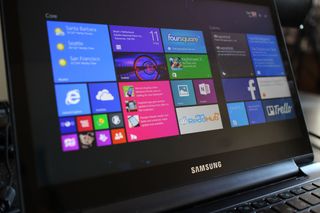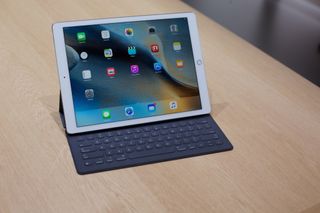iPad tweaks in iOS 11 prove Microsoft was on to something with Windows 8
iOS 11 for the iPad introduces a number of new features and improvements that originally appeared in Microsoft's Windows 8 OS. That doesn't mean Windows 8 was right, however.

Last week, Apple unveiled iOS 11, the next version of its mobile OS. iOS 11 will launch on iPhone, iPod and iPad later this year, and the changes are rather significant, especially for iPad. Apple introduced several new tablet-focused features, some of which are "borrowed" from Microsoft's Windows 8 OS.
Back in 2012, Windows 8 was met with bad reviews and terrible customer satisfaction. It was a poor release of Windows for many people, not because it lacked in features or didn't work as intended, but because it was such a different OS compared to the Windows everyone was accustomed to. It was a whole new experience that you had to relearn, and for many people, especially businesses, that's not something you want to be spending your time on.
Windows 8 was a tablet-first OS, and it showed. It was designed from the ground up for devices that were primarily touch-oriented. So, it shouldn't be much of a surprise to see Apple borrowing things from Windows 8. Things such as multitasking, swiping from the edge of the display to reveal hidden UI elements, and a whole lot more are now coming to or being improved on the iPad with iOS 11. Many people appear to see this as some kind of "I told you so" moment for Windows 8.
But it is not.
Windows 8 was still a bad idea
Windows 8 was still wrong, even if Apple is borrowing features and ideas from it. The problem with Windows 8 wasn't that it was a "bad OS," the problem was because it was Windows. Microsoft had built a tablet OS on top of an OS primarily used on desktops and devices without touch, and as a result, it tried to apply usage scenarios and behaviors that desktop users simply didn't want or need. iOS 11 doesn't validate Microsoft's Windows 8 OS in the slightest, and at most it further strengthens the idea that Microsoft should have built a separate version of Windows 8 for tablets.
Let's get one thing clear here: Windows 8 is an amazing tablet OS.

It's one of the best tablet OSes out there. It failed because Microsoft forced it upon the wrong user-base, being 95 percent of Windows users. In 2012, tablets were still new, and although they were gaining in popularity, most Windows devices were not tablets. Windows 8 would have made much more sense, and probably would've even been a hit, if it was an OS for tablets only.
Get the Windows Central Newsletter
All the latest news, reviews, and guides for Windows and Xbox diehards.
iOS 11 borrowing from Windows 8 proves this. iOS 11 on the iPad is probably the best iPad software update to date, introducing new user experiences and behaviors that make the iPad much more usable as a productivity device. These changes are welcome on the iPad, whereas on Windows 8, those changes were disliked universally. It's all about the platform, and if you try to apply the wrong behaviors to the wrong device types, you're going to have trouble. That's essentially what Microsoft did with Windows 8.
In 2017, things are different. Windows devices are now a lot more flexible, and with Windows 10 Microsoft built tablet mode for devices that were designed for Windows 8. Unfortunately, Microsoft appears to have put its tablet efforts on the back burner, focusing primarily on the desktop, laptop and 2-in-1 space where mouse and keyboard input is primary.
Perhaps Microsoft will eventually return to its tablet efforts, because with Windows 8 it was onto something. Sadly, what it was onto was applied to the wrong market, and as a result it failed.

